Airlines, Airports and Airliners 23 March 2023
Compiled by Willie Bodenstein
Google Banner Ad
This Week in Airlines, Airports and Airliners
IATA and Afroport Mauritanie sign agreement on ground handling safety.
Readout from the FAA Aviation Safety Summit Breakout Panels.
ICAO issues call for Advanced Air Mobility infrastructure and global harmonization solutions.
Passenger demand stays strong in January.
Safety, sustainability, and resilience focus for Council President's European activities.
Birmingham Is the latest airport to join the Zero-Emission flight race.
International Women's Day: Brussels Airlines flies to Marseille with 100% female cockpit.
SAUDIA to grow long-haul fleet with up to 49 Boeing 787 Dreamliners.
IATA AND AFROPORT MAURITANIE SIGN AGREEMENT ON GROUND HANDLING SAFETY

The International Air Transport Association (IATA) and Afroport Mauritanie have signed an agreement to enhance the safety of ground operations in Mauritania with a focus on two critical global standards: IATA Ground Operations Manual (IGOM) and the IATA Safety Audit for Ground Operations (ISAGO).
The agreement was signed by Kamil Alawadhi, IATA's Regional Vice President, Africa and the Middle East and Ahmed Al Hadabi, Group CEO of Terminals Holding, the parent company of Afroport Mauritanie the operator of Nouakchott-Oumtounsy International Airport and established the following joint work program:
Afroport Mauritanie will promote the adoption of IGOM by ground handling service providers (GHSP).
Afroport Mauritanie will recognize ISAGO as an acceptable means of compliance for airport oversight activities and make ISAGO registration and station accreditation a condition for GHSPs to operate at the airport
Afroport Mauritanie and IATA will monitor safety performance at the airport with the aim of identifying opportunities for improvement in ground operations.
"Global standards, such as IGOM and ISAGO are the foundation for a safe aviation industry. The commitment of Afroport Mauritanie to IGOM and ISAGO will help further Mauritania's social and economic development with safer ground operations. Lower adoption rates for global standards rank high among the factors limiting the benefits that aviation could deliver in Africa. This agreement is a great example for airports across the African continent to follow," said Alawadhi.
"Our goal in partnership is to support the development of a strong aviation sector with global standards and best practices at its heart. The agreement with IATA is a significant step towards achieving standardized, sustainable operations on the ground," said Al Hadabi.
The agreement furthers IATA's work in Africa to create a safe, efficient, sustainable and economical air transport sector that generates growth, creates jobs, facilitates international trade and tourism, and supports achieving the UN Sustainable Development Goals through global connectivity.
Google Banner Ad
READOUT FROM THE FAA AVIATION SAFETY SUMMIT BREAKOUT PANELS

More than 200 safety leaders from across the aviation industry met in specific breakout sessions Wednesday afternoon to discuss ways to enhance flight safety as part of the FAA's Aviation Safety Summit in McLean, Virginia.
The sessions focused on commercial operations, the air traffic system, airport and ground operations and general aviation operations. Each group was facilitated by a member of industry and a FAA subject matter expert. During his opening remarks to a plenary session that was open to a broad audience, acting FAA Administrator Billy Nolen urged the industry to look at all aspects of their operations with fresh eyes and to "question conventional wisdom" while examining ways to further enhance aviation safety.
"There is no question that aviation is amazingly safe, but vigilance can never take the day off," Nolen said. "We must ask ourselves difficult and sometimes uncomfortable questions, even when we are confident that the system is sound."
Nolen called Wednesday's summit to focus the industry following a string of recent safety incidents, several of which involved airplanes coming too close together during take-off or landing. After the morning plenary session, Nolen urged the attendees to discuss specific steps they could take in their respective areas to further tighten the U.S. aviation industry's already strong safety net.
During their breakout sessions, the industry groups focused on the recent string of incidents for ways to address areas where the existing safety system could be tightened to prevent future occurrences. Below is a brief synopsis of each group's discussions:
Commercial Operations
Pursue more efficient methods of sharing safety information in near real-time at all levels of the aviation industry, including frontline workers.
The FAA will urge the Commercial Aviation Safety Team (CAST) team to set a new goal of eliminating serious incidents such as runway incursions and close calls.
Continue to refine the data being collected by the Aviation Information Analysis and Sharing (ASIAS) system to include a broader range of factors that will help identify precursors to incidents.
Pilots and flight attendants expressed concerns that they continue to feel stress in the workplace, including long work hours under adverse conditions. The group acknowledged that risk models should also incorporate human factors.
Air Traffic System
Re-examine runway incursion data to identify underlying factors that led to these incidents and identify remedies.
The FAA issued a call to industry to help identify technologies that could augment existing capabilities of surface surveillance equipment and deploy this technology to all airports with air traffic control services.
Airport and Ground Operations
A primary concern was workforce experience and attrition. Airport operators, airlines, workers and the FAA discussed sharing the best practices of training programs among airport tenants and other stakeholders operating at airports. Airlines that operate regularly at specific airports said the industry could explore airfield familiarization training for employees.
The attendees discussed how to effectively implement Safety Management Systems (SMS) at more than 200 of America's busiest commercial airports. The FAA recently published a final rule that requires those airports to develop and adopt SMS programs within five years. The FAA will host a collaborative workshop on 30 March.
General Aviation Operations
Attendees discussed preliminary data from recent fatal accidents as part of their ongoing efforts to reduce the fatal accident rate in this sector. The group discussed ways to promote the sharing of General Aviation flight data in the ASIAS database to improve safety decision-making.
On 22 March the FAA will broadcast its annual From the Flight Deck Live virtual event for pilots. Topics will include prefight planning, wrong surface risk and human factors (runway safety) and airport signs, markings and lighting (airports). GA pilots who attend will earn WINGS continuing education credits.
Nolen said he expects the conversations begun during Wednesday's safety summit will continue in the coming weeks and months, particularly as spring and summer travel demand rebounds from the recent coronavirus pandemic. In addition to asking industry stakeholders to develop specific short-term actions, the overall task of pursing further safety improvements will be the subject of upcoming industry safety meetings such as InfoShare and CAST.
Nolen said in late February that he also planned to appoint a special panel to evaluate the nation's air traffic system and the FAA's safety oversight. The members of that panel, as well as further details about the scope of their work, will be announced soon.
In addition to FAA senior leaders, the facilitators for the breakout sessions included Yvette Rose, Senior Vice President, Cargo Airline Association; Pete Bunce, President & CEO, General Aviation Manufacturers Association; Hassan Shahidi, President & CEO, Flight Safety Foundation; and Christopher Oswald, Senior Vice President, Safety and Regulatory Affairs, Airports Council International- North America (ACI-NA).
Google Banner Ad
ICAO ISSUES CALL FOR ADVANCED AIR MOBILITY INFRASTRUCTURE AND GLOBAL HARMONIZATION SOLUTIONS
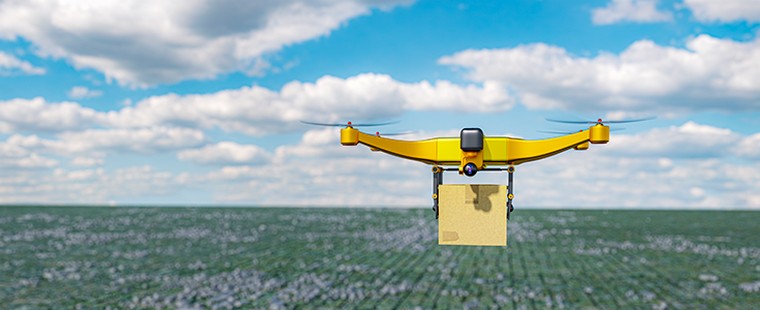
ICAO has issued a new request for information (RFI) to public and private-sector innovators in support of its upcoming 2023 DRONE ENABLE Symposium.
The RFI is issued annually to elicit new concepts and solutions to advance next generation global standards for cutting-edge unmanned aircraft systems (UAS), UAS traffic management (UTM) and advanced air mobility (AAM), with a focus on infrastructure requirements for this year.
"This year's edition of DRONE ENABLE, focuses on the infrastructure solutions which will be needed to support these new types of aircraft and air services as they begin to be used for communities and economies all over the world," stated ICAO Council President Salvatore Sciacchitano.
"All DRONE ENABLE RFI responses will be evaluated by a group of international experts, and selected presenters will earn an important opportunity to contribute to shaping this incredible new future for powered flight," commented ICAO Secretary General Juan Carlos Salazar.
The deadline for the RFI submissions is 19 May 2023, with submitters being asked to focus on concepts and solutions addressing CNS (communication, navigation, surveillance) and spectrum requirements in low-level airspace. A further request seeks submissions identifying global interoperability and harmonization priorities for advanced air mobility.
The 2023 ICAO DRONE ENABLE Symposium will take place from 5 to 7 December at ICAO's Headquarters in Montréal, Canada.
DRONE ENABLE RFI submissions greatly assist countries as they continue to work through ICAO to harmonize UAS and AAM related regulatory frameworks and guidance material, with the ultimate objective of achieving safe, efficient, and effective UTM and AAM ecosystems which are globally interoperable and accessible.
Google Banner Ad
PASSENGER DEMAND STAYS STRONG IN JANUARY
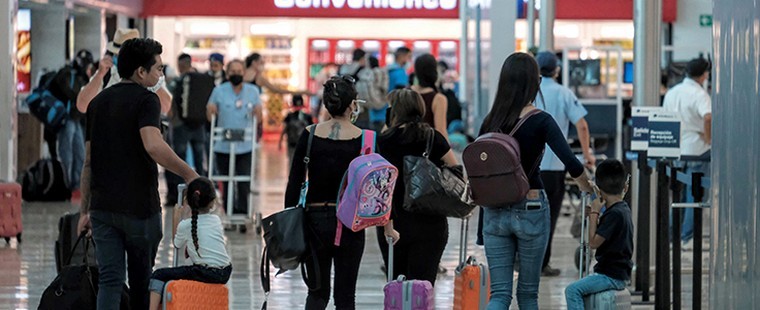
The International Air Transport Association (IATA) announced that the recovery in air travel demand is continuing in 2023, based on January traffic results.
Total traffic in January 2023 (measured in revenue passenger kilometres or RPKs) rose 67.0% compared to January 2022. Globally, traffic is now at 84.2% of January 2019 levels.
Domestic traffic for January 2023 rose 32.7% compared to the year-ago period, helped by the lifting of the zero-COVID policy in China. Total January 2023 domestic traffic was at 97.4% of the January 2019 level.
International traffic climbed 104.0% versus January 2022 with all markets recording strong growth, led by carriers in the Asia-Pacific region. International RPKs reached 77.0% of January 2019 levels.
"Air travel demand is off to a very healthy start in 2023. The rapid removal of COVID-19 restrictions for Chinese domestic and international travel bodes well for the continued strong industry recovery from the pandemic throughout the year. And, importantly, we have not seen the many economic and geopolitical uncertainties of the day dampening demand for travel," said Willie Walsh, IATA's Director General.
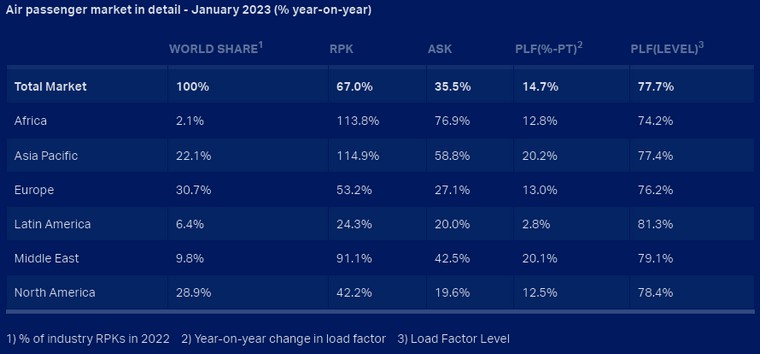
International Passenger Markets
Asia-Pacific airlines posted a 376.3% increase in January traffic compared to January 2022, by far the strongest year-over-year rate among the regions, but off of a very low base when much of the region was still closed to travel. Capacity rose 167.1% and the load factor increased 36.6 percentage points to 83.3%, the highest among the regions.
European carriers saw a 60.6% traffic rise versus January 2022. Capacity increased 30.1%, and load factor rose 14.2 percentage points to 75.0%.
Middle Eastern airlines' January traffic rose 97.7% compared to January a year ago. Capacity increased 45.9% and load factor climbed 20.8 percentage points to 79.2%.
North American carriers reported an 82.4% traffic increase in January versus the 2022 period. Capacity rose 37.3%, and load factor climbed 19.7 percentage points to 79.6%.
Latin American airlines had a 46.8% traffic increase compared to the same month in 2022. January capacity climbed 34.3% and load factor rose 7.1 percentage points to 82.7%, the second highest among the regions.
African airlines' traffic rose 124.8% in January 2023 versus a year ago. January capacity was up 82.5% and load factor climbed 13.9 percentage points to 73.7%, the lowest among regions.

European carriers saw a 60.6% traffic rise versus January 2022. Capacity increased 30.1%, and load factor rose 14.2 percentage points to 75.0%.
Middle Eastern airlines' January traffic rose 97.7% compared to January a year ago. Capacity increased 45.9% and load factor climbed 20.8
percentage points to 79.2%.
North American carriers reported an 82.4% traffic increase in January versus the 2022 period. Capacity rose 37.3%, and load factor climbed 19.7 percentage points to 79.6%.
Latin American airlines had a 46.8% traffic increase compared to the same month in 2022. January capacity climbed 34.3% and load factor rose 7.1 percentage points to 82.7%, the second highest among the regions.
African airlines' traffic rose 124.8% in January 2023 versus a year ago. January capacity was up 82.5% and load factor climbed 13.9 percentage points to 73.7%, the lowest among regions.

The Bottom Line
"With strong travel demand continuing through the traditionally slower winter season in the Northern Hemisphere, the stage is set for an even busier spring and summer. At a time when many are just beginning to enjoy their newly restored travel freedoms, it is especially disappointing to see the Dutch government making plans to limit their movements by unilaterally and unjustly reducing operations at Schiphol Airport," said Walsh.
Google Banner Ad
SAFETY, SUSTAINABILITY, AND RESILIENCE FOCUS FOR COUNCIL PRESIDENT'S EUROPEAN ACTIVITIES
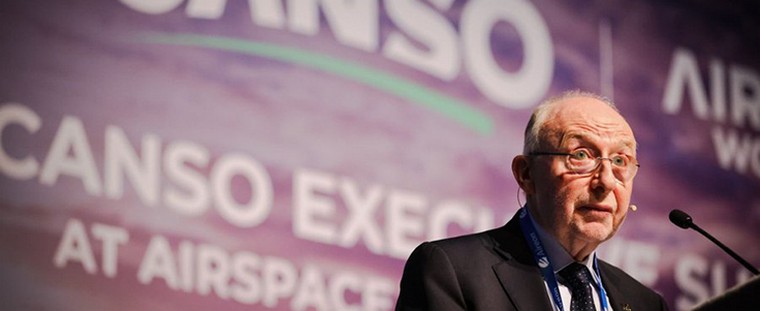
In Geneva on 7 March 2023, ICAO Council President Salvatore Sciacchitano delivered the keynote address to the CANSO Executive Summit at "Airspace World," where he advocated for greater cooperation between air navigation service providers and ICAO to heighten the sustainability and resilience of the global flight network.
Highlighting the outcomes of the 41st Session of the ICAO Assembly (A41) and recent ICAO Council deliberations, the President underscored that achieving these priorities for ICAO and for the global aviation sector as a whole will require integrating the lessons learned from the COVID-19 pandemic, and effectively addressing challenges related to environmental protection, in particular climate change.
The President's mission to Switzerland was preceded by a series of bilateral discussions that took place in Brussels on 6 March. The President met with the Director General of EUROCONTROL, Mr Raúl Medina, followed by the European Commission's Director General for Climate Action, Mr. Kurt Vandenberghe, and then the European Commissioner for Transport, Ms. Adina Valean.
These meetings focussed on the realization of the ambitious outcomes of A41, including the decarbonization of air transport by 2050, the mitigation of threats to civil aviation in conflict zones and the importance of the "Safer Skies" initiative in this regard, and pressing concerns around cybersecurity. The central role ICAO plays as the platform for the global coordination on these issues informed discussions around enhancing cooperation between Europe and ICAO, and between Europe and States in other regions.
Google Banner Ad
BIRMINGHAM IS THE LATEST AIRPORT TO JOIN THE ZERO-EMISSION FLIGHT RACE
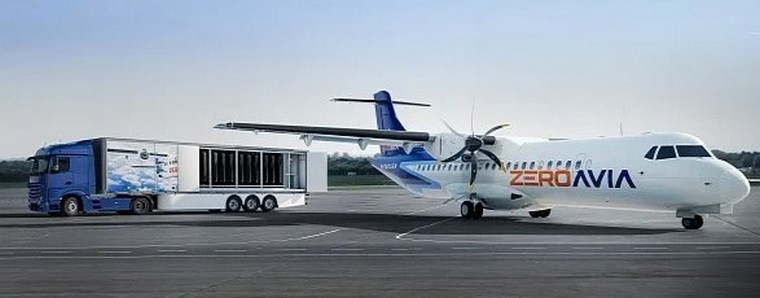
Almost two years ago, ZeroAvia was making headlines with an interesting test. The ZA-600, its 600 kW powertrain for hydrogen-electric aircraft, successfully pulled a 15-ton heavy-duty truck. The company started out with a smaller 250 kW version that could power a six-seat aircraft, and gradually worked its way up to the ZA-600 for a 10-to-20-seat airliner. The final goal is a 2MW+ powertrain, the ZA-2000, which will be able to propel large airliners of up to 80 seats.
After years of development and tests, the UK-headquartered company finally carried out a test flight in January, using an existing aircraft that was converted to hydrogen-electric propulsion. It was a twin-engine, 19-seat Dornier 228, which was retrofitted with a full-size ZA-600 powertrain. The Dornier took off from the Cotswold Airport and completed a ten-minute flight in the area.
The next step is to join forces with various airports, in order to start building and testing the adequate infrastructure for future hydrogen-powered flights.
Earlier this month, ZeroAvia teamed up with Rotterdam The Hague Airport, Netherland's second-city airport, in preparation for upcoming demonstration flights in 2024. At first, they are aiming for short-distance flights in the region, 250 miles (402 km) at most. But the plan is to eventually launch regular passenger flights powered by hydrogen, starting 2025. Shell is also part of that project, as the hydrogen supplier.
The next airport to team up with ZeroAvia is Birmingham. It seems that one of the airport's terminal buildings that's no longer in use could become a platform for future hydrogen flights. More specifically, an area near this Elmdon building will be used to set up hydrogen refuelling infrastructure. Then, flight tests and other operations will be organized at this base.
In just two years, a 20-seat aircraft powered by ZeroAvia's powertrain, could be carrying passengers across 300 nautical miles (550 km). In other words, routes such as Birmingham-Dublin or Birmingham-Glasgow could become compatible with flights that are 100% emission-free.
Even the idea of green flights to Mediterranean vacation spots is not that far-fetched. Before the decade ends, large airliners could be flying up to 80 passengers in total comfort, with no emissions, from the UK to these vacation destinations. At least, that's what ZeroAvia hopes to achieve. Right now, it's still hard to tell which European airport will be the first to officially kick off hydrogen-powered passenger flights. But one thing seems certain: the ZA-600 will write aviation history.
Google Banner Ad
INTERNATIONAL WOMEN'S DAY: BRUSSELS AIRLINES FLIES TO MARSEILLE WITH 100% FEMALE COCKPIT.
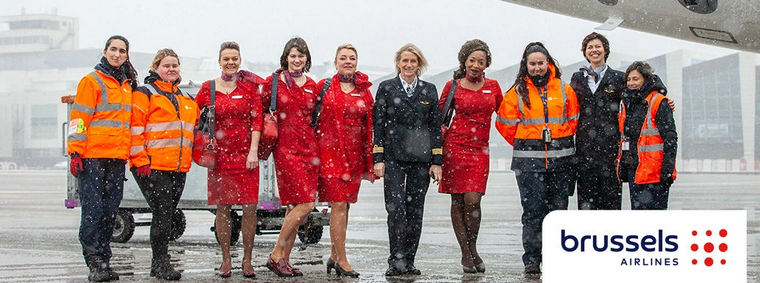
A Brussels Airlines Airbus A319 flew from Brussels Airport to Marseille this morning with two women in the cockpit. Before departure, the passengers' baggage was also handled by an all-female team from Alyzia and the flight was boarded by an all-female passenger services team from Brussels Airlines. With this symbolic flight on International Women's Day, the Belgian airline highlights the importance of gender equality and inclusion.
On this 112th International Women's Day, Brussels Airlines once again highlights the importance of a world where men and women are equal. That is why Captain Catherine, First Officer Justine and cabin crew members Hilke, Kedy and Maureen are operating flight SN 3597 to Marseille today. Among the cabin crew, one man is also symbolically travelling with them, Christophe.
"Over recent years Brussels Airlines has been working towards more gender equality between men and women, an ambition we are committed to," says Cedric Vanasbroeck, Diversity & Inclusion Manager at Brussels Airlines. "But inclusion in the broader sense is also high on our agenda. Everyone is welcome in our open-minded and multicultural company, whatever their gender, age, origin, religion and sexual orientation may be."
More than half of the employees are women
Over half (53%) of the staff at Brussels Airlines today are women. Although there is still room for more balance across all departments (except for cabin crew and airport passenger services staff with respectively 72% and 75% women), Brussels Airlines is among the leaders in aviation. For instance, for the time being, one in ten pilots at Brussels Airlines is a woman, which is almost double the number usually found in the aviation industry (5 to 6%). Also the percentage of women in management positions is with 35% higher than the average and well above the Gender Balance targets for leadership roles as defined by IATA (International Air Transport Association). There is also a strong female representation in the commercial department (56%) and in Back Office operations (47%).
In atypical areas like IT and the technical functions at Maintenance & Engineering, the challenge to bring women on board remains high: in Maintenance only 5% is female, whereas in IT 34% is a woman.
"We continue to increase our efforts to guarantee diversity and inclusion in all divisions of the company," says Cedric Vanasbroeck. "Women's empowerment is one of our priorities. In the coming months, we are actively looking for well over 100 new employees. In that search, we want to encourage women to take a look at our opportunities as they are welcome in all positions, such as aircraft cabin technician, product managers to flight operations officer."
Google Banner Ad
SAUDIA TO GROW LONG-HAUL FLEET WITH UP TO 49 BOEING 787 DREAMLINERS

Boeing [NYSE: BA] and Saudi Arabian Airlines (SAUDIA) today announced the national flag-carrier will grow its long-haul fleet with the selection of up to 49 787 Dreamliners. SAUDIA is set to purchase 39 787s, with a further 10 options, utilizing the outstanding efficiency, range and flexibility of the Dreamliner to sustainably grow its global operation. The agreement will include both 787-9 and 787-10 models.
This agreement is part of Saudi Arabia's wider strategic plan to transform the country into a global aviation hub. In total, Saudi Arabian carriers announced today their intent to purchase up to 121 787 Dreamliners in what will be the fifth largest commercial order by value in Boeing's history. This will support the country's goal of serving 330 million passengers and attracting 100 million visitors annually by 2030.
"SAUDIA continues its expansion efforts in all aspects of the airline; whether it's introducing new destinations or increasing the aircraft fleet," His Excellency Engr. Ibrahim Al-Omar, Director General of SAUDIA Group. "The agreement with Boeing delivers on this commitment and the newly added aircraft will further enable SAUDIA to fulfil its strategic objective of bringing the world to the Kingdom".
SAUDIA currently operates more than 50 Boeing airplanes on its long-haul network, including the 777-300ER (Extended Range) and 787-9 and 787-10 Dreamliner. The additional 787s complement SAUDIA's existing fleet, enabling it to effectively harness the value of the 777 and 787 families.
"Adding to its 787 Dreamliner fleet will enable SAUDIA to expand its long-haul service with outstanding range, capacity and efficiency," said Stan Deal, president and CEO of Boeing Commercial Airplanes. "After more than 75 years of partnership, we are honoured by SAUDIA's confidence in Boeing products and will continue to support Saudi Arabia's goal to expand sustainable air travel."
Since revenue service began in 2011, the 787 family has launched more than 350 new nonstop routes around the world, including about 50 new routes since 2020. The Dreamliner reduces fuel use and emissions by 25% compared to the airplanes it replaces.
Google Banner Ad

|
                       |























